On July 11 at a news conference in Calgary, federal Agriculture Minister Marie-Claude Bibeau announced $13.2 million in funding to support grain and oilseed exports. A long list of commodity groups received federal government money, including the Canola Council of Canada, Soy Canada and Pulse Canada, in amounts ranging from $210,000 to $4.1 million. The […] Read more
Crop Management — page 349

Man. researcher looks to explore cover crops
A plant scientist is surveying farmers to determine how many of them grow cover crops and why they do so
Agronomists and soil scientists like to talk about cover crops. At farm meetings and field days they tout the benefits of cover crops, such as reducing soil erosion, suppressing weeds and improving soil health. All those claims may be valid, but are western Canadian producers actually using cover crops on their farm? Yvonne Lawley, University […] Read more
Work starts on drone spraying rules
The PMRA does not allow crop protection products to be applied by aerial drones; experts say more research is needed
When the Canadian Aerial Applicators Association got wind that Don Campbell had been approved by Transport Canada to emit fluid from a drone, the group decided he needed to be stopped. “Just because Transport Canada has approved them as an unmanned aircraft for flying, that does not mean that they have been approved by the […] Read more
Electrical hazards can be reduced in agricultural welding
Arc welding is an indispensable tool on farms and ranches across Canada. When an implement, machine or gate is broken and time is short, most people in agriculture have the tools and know-how to weld it where it sits, or if necessary, bring it into a workshop for welding. With or without formal training in […] Read more
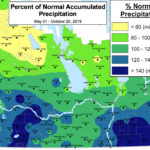
Slow harvest progress in Manitoba as fields still wet
Winnipeg Oct. 23 (MarketsFarm) – Manitoba farmers made minimal harvest progress during the week ended Oct. 22, as fields across the province continued to dry out after being hit by a winter storm the previous week. The total harvest was pegged at 77 per cent complete province-wide, which was up by only three points from […] Read more

Survey finds little appetite for seed royalties
Prairie farmers are in no mood to pay additional fees when they save and replant seed that was grown and harvested on their own land. That’s one of the key findings of a producer survey on seed royalties. The survey, which sought producer opinions on new seed royalty collection mechanisms, was conducted over the past […] Read more
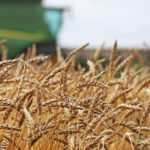
Western Canadian wheat: Good gains for red spring, durum eases
WINNIPEG (MarketsFarm) – Wheat bids in Western Canada were mostly higher for the week ended Oct. 17. There were strong gains in Canadian Western Red Spring Wheat (CWRS) and Canada Prairie Red Spring (CPRS). Meanwhile Canadian Western Amber Durum (CWAD) was steady to lower. The Canadian dollar gained almost nine-tenths of a cent during the […] Read more
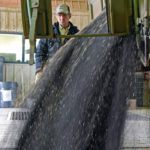
Canadian canola deliveries hit weekly record
Winnipeg (MarketsFarm) – Canadian farmers made record deliveries of canola into the commercial pipeline during the second week of October, according to the latest Canadian Grain Commission data. Wet weather, including heavy snow in some regions, continued to keep farmers off of their fields across much of Western Canada, but producers were actively delivering canola […] Read more
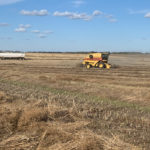
Better weather helps Saskatchewan harvest: report
Winnipeg (MarketsFarm) – Relatively warm and dry conditions allowed Saskatchewan farmers to make some harvest progress during the week ended Oct. 14, although operations continue to run well behind normal, according to the latest report from Saskatchewan Agriculture. The overall harvest progress increased to 69 percent done, from 55 percent the previous week. That compares […] Read more
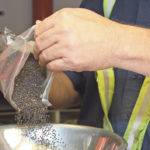
Grain grading not well understood
A farmer says inaccuracies in grain grading and dockage determination could cost growers millions of dollars
A Saskatchewan farmer says prairie grain growers are at risk of losing big money — potentially hundreds of millions of dollars every year — because no one is asking tough questions about the way grain is graded and sold in Western Canada. Grain growers across the West sell tens of millions of tonnes of grain to commercial […] Read more





